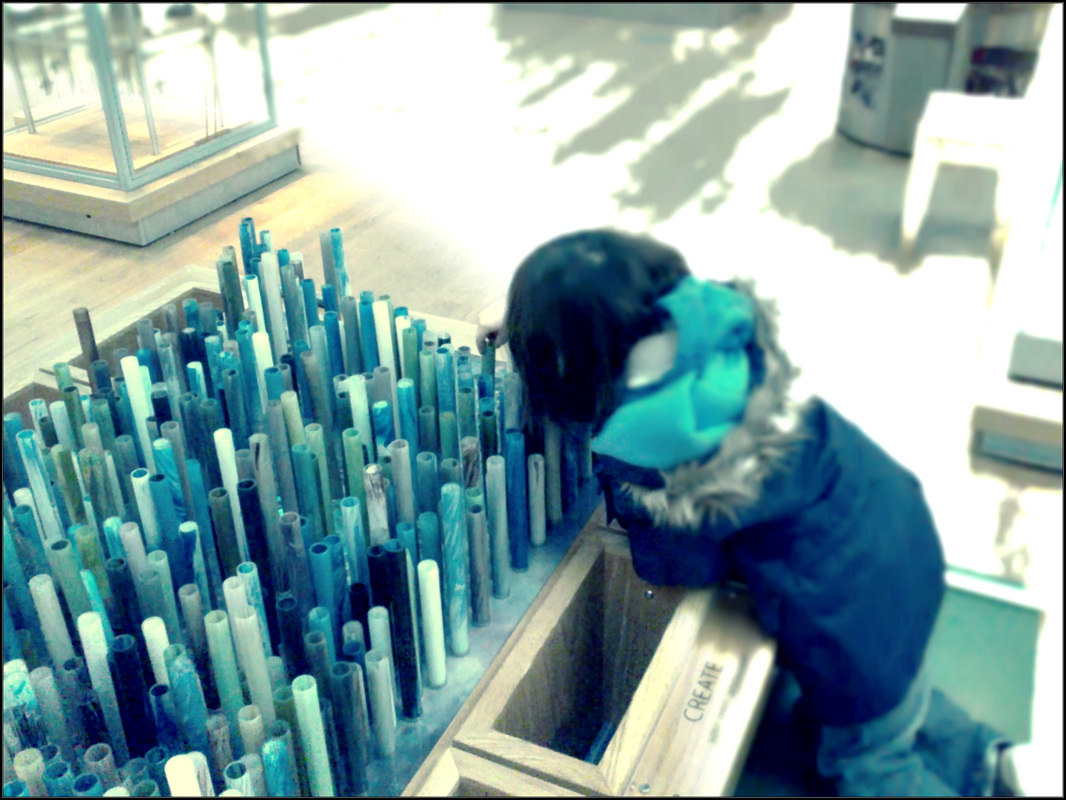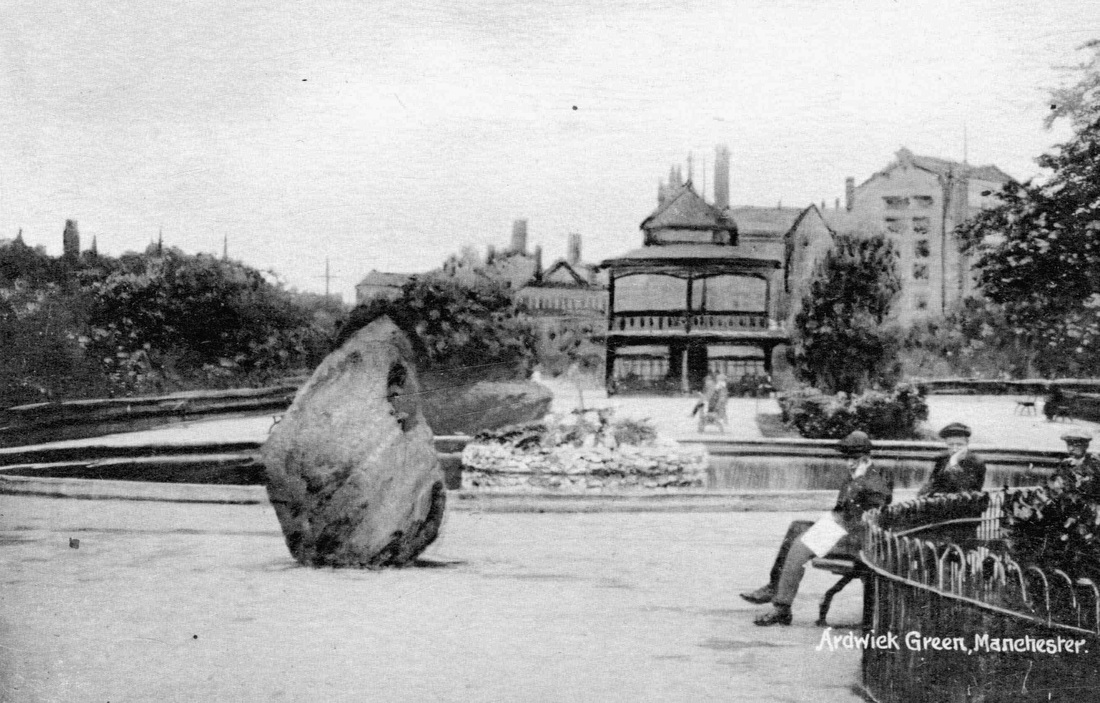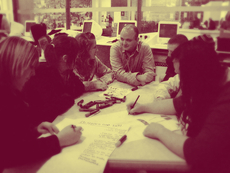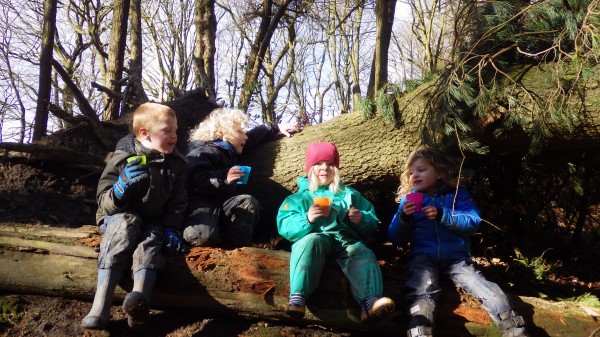 The relationship between museums and autism first began to percolate in my mind a few years ago and slowly I've been piecing together more and more learning and thinking. It's been accelerated lately for a number of reasons, each of which has some really useful learning for the museums (and wider cultural) landscape. In no particular order, they are presented below - take whatever learning and inspiration you can from it, and apply it in some way to your own work or thinking. Change is made one step at a time... 1. "If you've met one person with autism, you've met one person with autism" People who have autism each have their own version of it. Many such people share some of the characteristics, but one person's experience of autism could be almost unrecognisable to another. (Great blog post here if you're interested in more on that theme). 2. We're slow on the uptake. Cinemas have been programming autism friendly events for a few years now. Museums can a learn a lot here from their cultural counterparts. You could look up pretty much any cinema and find an autism friendly events listing. Try it. Why should museums be different? It's hard to try and assemble a single approach to becoming more autism friendly precisely because every person with autism has their own individual version of it. Whilst a good starting point is find out what you can, and do what you can with what you have (and read point 3 below), the cinema approach has taken a few core approaches: - lower lighting levels when lights are up [to help people with extra sensitivity to bright light] - lower volume levels [for people with extra sensitivity to sound / reverberations] - trailers are removed from the show [reducing the time needed to be in a different environment or the time needed to focus] - taking own food / drinks is encouraged [special dietary needs are common with autism] - moving round the cinema is fine whilst the film is showing [because sitting still and / or quiet for long periods is a challenge for some people with autism]. Simple adaptations, no cost involved. 3. We have an excellent champion working from the inside out. She won't thank me for cheerleading her work because she's a modest and unassuming sort of person, but over on Twitter you can follow Tincture of Museum, 'Volunteer at Museum of London, Horniman Museum and Bromley Museum; blogger; mum; advocate of autism in museums'. She's a gentle and hugely effective campaigner and writes very insightfully on this subject. Maybe start with this post from her blog. 4. Collectively, the museum profession is onto a good thing. There was a great question about how to successfully, sensitively and appropriately include some particular children with autism and other conditions posted on the Group for Education in Museums email list and some brilliant insight collated and shared back around by Dr Trudie Cole, Learning and Access Manager at Poole Museum Service. You'll find it all in the document at the bottom of this post. What an incredible body of knowledge and experience museum professionals have on this subject - pretty powerful when you put it all together. Likewise, the Science Museum have their Early Birds programme offering more quiet access for children with autism (both in terms of noise and visitor hustle and bustle); Manchester Art Gallery trialled their Open Doors programme for families with children on the autistic spectrum; and the RAF Museum have recently become the UK's first cultural venue to receive The Autism Access Award from the National Autistic Society. More here and here. There are more plans afoot and more conversations being had within the museum sector to push awareness and understanding up a gear. I'm sure this will soon become a big thing for our profession. 5. You can't necessarily spot museum staff (or people in general) with autism, and it's hard to put in an employment policy. This is a strange one that came about when I saw a post on twitter asking if anyone knew of any museums who employed people with autism. It would be unethical and illegal (in the UK at least) for an organisation like a museum to give any personal information out about any of their employees. And then there are further complications which would make it difficult even if technically, they could, but I think it's worth talking about these with the intention of building more understanding about the nature of having and working with autism... On the one hand I think you'd be hard pushed to find a museum of a decent size that didn't employ someone with autism (statistically autism is currently thought to occur in between 1 in 100, and 1 in 80 people in the UK, depending on which reports you read); and many facets of museum work would naturally attract certain skills and characteristics known to be part of the autistic spectrum. On the other, who would know? Autism is invisible. There are a range of associated conditions that can accompany autism which have physical manifestations but autism itself exists and plays out within the brain first and foremost. This leads to complications about identifying employees with autism since a) a person may not know they have it - it may never have occurred to someone that they may have it, and diagnosis levels in adults (particularly women) in the UK are low for various reasons b) a person may have self-diagnosed, but have no professional confirmation - so do they have it or not? c) if they know they have it, they may or may not have chosen to let their employer (or anyone else) know d) even if a museum were to have an actual pro-autism or targeted disability employment policy, see a, b and c above So, if for some reason you're interested in finding people with autism who work in museums, try and find the people, rather than the museums. 6. More here And finally - there is a long list of autism friendly work by museums around the world here (listed by Autism Speaks, though this is not an endorsement of that organisation. If you discover a list hosted elsewhere leave a comment, I would be happy to refer elsewhere instead when possible). ... thanks to Trudie Cole and Claire Madge for their help with putting this blog post together...
4 Comments
 Image courtesy of Manchester Libraries, Information and Archives, Manchester City Council Image courtesy of Manchester Libraries, Information and Archives, Manchester City Council I've just recently started work on the evaluation of a year long programme hosted by Manchester Metropolitan University's Institute of Humanities and Social Science research. Entitled Creating Our Future Histories, the scheme sees 'early career researchers' (usually those who are completing a PhD, or are just about to start one / have recently finished one) working with Manchester community organisations. Each partnership is mentored by a more experienced academic. The partnerships are punctuated along the way by a series of weekend workshops combining into a professional development course on how community engagement between academics / researchers / communities might take shape. Each partnership is also expected to meet at least once between each workshop. The partner-groups are developing co-constructed plans and activities which research previously uncharted areas of the organisation's heritage, and look towards incorporating their future in a way which will become part of their heritage in years to come - there's the 'Future Histories' part. Late next Spring each group will showcase their findings in creative and public ways - many yet to be decided; though ideas are already circulating about film, video, exhibtions, time capsules and more. I'm about a month in and I'm once again struck by the many rich and hidden histories of Manchester - industry, architecture, battle and radical action, many many things which show the inventiveness and resilience of this sometimes bloody minded and often ingenius city. You can find out more about the project here and I particularly recommend the research group pages and project blogs to find out more about the organisations involved and the progress and reflections taking place.  Image from an interactive, multisensory learning project I once ran. Image from an interactive, multisensory learning project I once ran. Massively vital reading for teachers (even more so secondaries). This insightful post by Alexis Wiggins, was original scripted anonymously. She later outed herself - rightly so, absolutely nothing here to hide! She starts with, "I have made a terrible mistake. I waited fourteen years to do something that I should have done my first year of teaching: shadow a student for a day. It was so eye-opening that I wish I could go back to every class of students I ever had right now and change a minimum of ten things – the layout, the lesson plan, the checks for understanding. Most of it!" She goes on to describe her experience and provide 3 key learning points, each with practical suggestions to her past and future self, and all other teachers out there. Read it and then do it. And then if you can, get your managers / heads / team to read and do it too. Some of you will already include some of these things in your practice but I guarantee some will be new inspiration. I'd also extend the basic principle to all people who work with audiences, customers, learners, pupils, participants etc... when was the last time you walked in their shoes. Turn the tables on yourself and see what you can improve. There's already some discussion of this going on on my Facebook page if you want to join in... *here*  Lovely post from EarlyartsUK on The Wild Classroom - whys and hows and what it looks like and why, most of all, not to be afraid of the wilderness! Let's get more kids out there...  Gothic Manchester Festival Gothic Manchester Festival Just when you thought there was nothing left for Manchester to festivalise, I'd just like to draw your attention to Gothic Manchester Festival 23-26 October, run by The Manchester Centre for Gothic Studies at Manchester Metropolitan University. I'm so excited about this on many levels. Not that excitement and goth really go together but... I'm really struck today by why artists / schools often feel a need to 'dumb down' what's possible - so many simple mosaics, hand prints, flowers, butterflies... there's nothing wrong with those, but it's as though there's an assumption that children aren't capable of getting wrapped up in ideas, thoughts, concepts, challenge, investigation, invention and processes. I know that they are, that they can handle more conceptual art than many adults, that ideas and possibility makes them buzz. So where is it that these limitations come from? Maybe it's the adults who are scared? Should we take a step back and learn from what the children can unlock for us? I'm just saying, let's not always fall back on the lowest common denominator.
You can read more comments and join in this conversation over on Facebook here... Incredible film about what it means to be a craftsperson, a maker, and the 'consumer' of handmade objects. The way in which the quality and love is communicated so strongly and authentically is captivating. As well as the magic that underlies the ballet shoe. I was lucky enough to see what this meant to dancers first hand, way back when I worked with Northern Ballet. The memories of dancers sitting in corridors scratching and darning the shoes for better fit and grip is still vivid. Look what my lovely friends at MOSI have done for all you wonderful teachers. Roll up roll up, bring all your finest young imagineers!  There is an exciting opportunity for potters to get involved in a historic landmark project to commemorate the outbreak of WW1. The Tower of London are currently engaged in a major art installation to place 880,000 Ceramic Poppies around the moat of the Tower for November 11th 2014. At Potclays we are proud to be the supplier of materials and equipment to the project and the fact that part of the installation will be made in Stoke makes it that little bit more special. There is the opportunity for about 20 people to take part in paid work to support a WW1 commemorative Art project. This phase of the project commences on Monday 28th July and the duration of the work is up to 3 months and they need people who have some craft skills - for anyone who has done a BA or MA in ceramics or anyone with a craft background. They are looking for ceramic makers and technicians who can work a 9 hour day (with an hour lunch break) at a rate of £10 an hour for making poppies. This rate is negotiable for experienced makers willing to commit for the 3 month period. The working hours are 8am to 5pm. The work will take place on the site of Johnsons Tiles in Stoke who have a great set up and there would be a lot to gain for graduates or practitioners from a 3 month opportunity working there in terms of learning and experience. Fiamma is especially interested in any technicians or experienced craft practitioners in the team to help meet their target of 880,000 poppies. If they can't do the whole 3 months, they’d still like to hear from them. Please contact Fiamma directly about this opportunity. Please contact [email protected] if you are available, leaving a telephone number.  Image: The Atom, photo c Mid Pennine Arts Image: The Atom, photo c Mid Pennine Arts Having relocated back to Lancashire, I'm now evangelical about it's hidden arts and cultural treasures. Here's a fantastic map of public arts across Pennine Lancashire - do come and visit the area and explore via the ArtsMap . The image is one of my absolute favourites: The Atom, on the Lancs / Yorkshire border... |
Details
...BlogI'm most interested in how the public, your public, whoever that may be, engages with culture and creativity.
And if it nurtures creativity and develops personal, social or professional skills I'm absolutely all ears. Categories
All
Archives
May 2023
|
||||||


 RSS Feed
RSS Feed
